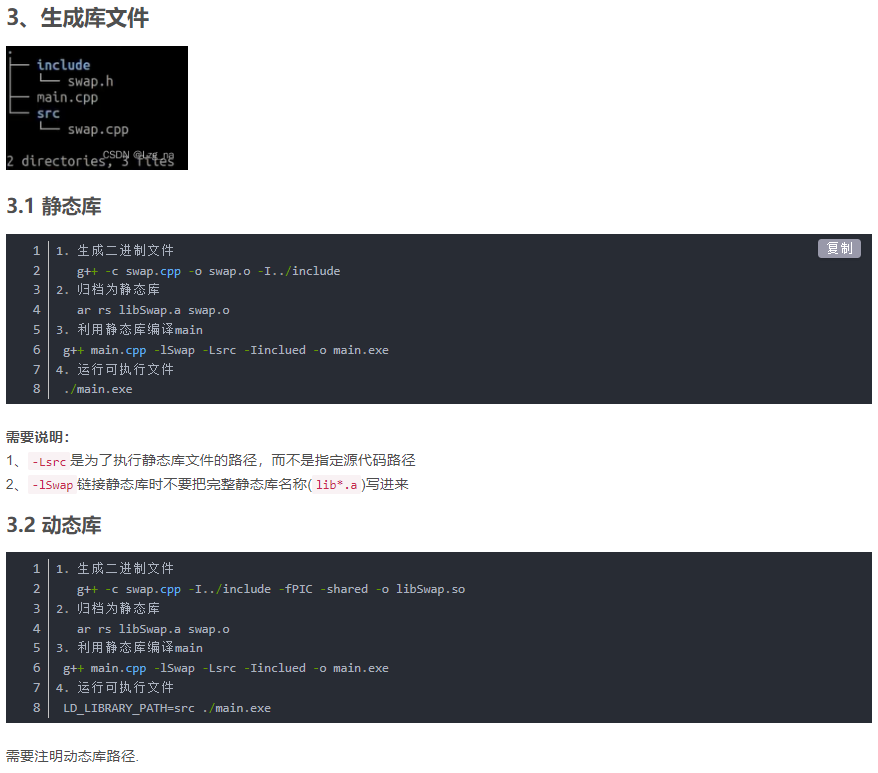c++可执行文件产生过程
https://blog.csdn.net/qq_34799070/article/details/125472381


#ifndef TEST
#define TEST
#include <iostream>
using namespace std;
void test()
{
cout << "hello word" << endl;
}
#endif
#include <iostream>
#include <mytest.h>
using namespace std;
// https://blog.csdn.net/chen1083376511/article/details/114447485
// g++ -I .\include\ -Wall -std=c++11 .\main.cpp -o .\output\main.exe
// 1. 预处理--宏展开,头文件包含:g++ -I .\include\ -Wall -std=c++11 -E .\main.cpp -o .\output\main.i
// 2. 编译--生成汇编语句代码:g++ -S .\output\main.i -o .\output\main.s
// 3. 汇编--生成机器语言代码:g++ -c .\output\main.s -o .\output\main.o
// 4. 链接--生成可执行稳健:g++ .\output\main.o -o .\output\main.exe
int main()
{
test();
return 0;
}
生成一个C++程序共有三个步骤:
-
预处理:代码在预处理器中运行,预处理器会识别代码中的元信息。
-
编译:代码被编译或转换为计算机可以识别的目标文件。
-
链接:独立的目标文件链接在一起变成一个应用程序。


 浙公网安备 33010602011771号
浙公网安备 33010602011771号